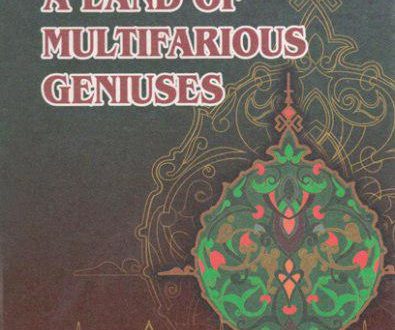Highly appreciating the ability of Kamaliddin Behzad, the king of Iran Ismail Safavi made orders to provide the artist with all the facilities and necessary conditions needed for Behzad s creative work in Tabriz. A group of his students and followers also accompanied him on his way to Tabriz and they also continued their creative work in Tabriz under the control of Behzad.
At that time, the political situation in Tabriz, generally in Iran, was not satisfactory. Salim Pasha, the ruler of Turkey, was threatening on Iran and in 1514, in the vast field of Chaldaran, not far from Tabriz there was a merciless battle between Turkey and Iran. In this war, Iran was defeated and for about a year Tabriz was under the control of Turkey. Very hard days fell on the destiny of Kamaliddin Behzad. As the sources inform us, in accord with the Decree of the king Ismail Safavi, Kamaliddin Behzad and a famous scribe Shah Mahmud Nishapuri were taken away and hidden into a cave in the mountains from the sight of Turks so that the latter could not capture them and take the prisoners after the war. According to the statement of the book “Saramadani hunar”, coming out of the battle defeated, the first questions Shah Ismail asked were: “How is Behzad? Is he alive?”, “Didn’t Turks take him away?”
Orientalists and artists do not have much information about Behzad’s life and creative activities in Tabriz. For instance, the question whether Behzad lived in Herat or in Tabriz from 1512 to 1522, i.e. up to his appointment as the Head of the Royal Library is not still clear. Some specialists consider that during those ten years Behzad lived in Herat. However, some other reasons make us think in the other way.
It should be taken into consideration that Shah Ismail Safavi could not leave his favourite artist and engraver Kamaliddin Behzad in Herat after conquering it because Behzad was the most famous artist and engraver of his time throughout the Eastern countries. He was “the most precious and rare pearl” in the treasure of Sultan Husain Mirza. Thus, this question still remains unanswered. It is difficult to say something concerning this problem unless the specialists find anything reliable on the problem under discussion. European orientalists studying the biography of Behzad could not say anything definite about Behzad’s life in Tabriz. For instance, a European orientalist studying Behzad’s life states that the artist came to Tabriz in 1506 and stayed there up to 1520 engaged in his creative work. Thus, we can see different opinions and debatable questions of the historians concerning Behzad s life and creative activity during his stay in Tabriz.
However, ten years was not a short period of time. These years were the most disturbing, restless and uneasy years of his life. His school of fine arts for the establishment of which he had spent his knowledge and skills had to face crisis with the crisis of the Empire of the Temurid dynasty. During these years, Kamaliddin Behzad must have visited Herat several times, met Zahiriddin Muhammad Babur and had a good talk with him when he once visited Herat.
In 1522, Shah Ismail issued a special Decree according to which Kamaliddin Behzad was appointed a Head of the Royal Library of Tabriz. The text of this decree was too long and written in a very high-flown style that was peculiar to the writing style of that time. We provided below a shortened version of this Decree.
A certificate
given to Master Kamaliddin Behzad on his appointment to the position of the Head of the Royal Library of Tabriz.
In accord with the will of the Creator, taking into consideration his mastership and unique abilities in art and engraving,as well as the admiration of the public and keeping in mind the saying “We appointed you the assistant of the ruler of the Earth”, we signed the Decree on the appointment of Master Kamaliddin Behzad, a man of rare abilities and the leader of the artists of the time, a Head of the Royal Library of Tabriz.
We order that every member of the library community as well all the artists engaged in the fine arts should follow his orders and will. All the elite of the Royal court are to show necessary support to His Mastership in all his activities.
This Decree and its seal are to be respected and taken to performance. The Master and his subordinates should follow all the directions ensuing from this Decree.
After signing and sealing, this Decree shall be brought to the notice of all the officials.
The 27th day of the month of Jumod ul-avual, 928 A.H. (April 24, 1522).
Generally speaking, Kamaliddin Behzad’s life in Tabriz was no so smooth as it had been in Herat, because the political situation in Tabriz was very tense and internal wars were going on in the country. Moreover, in Tabriz he had no such close friends and reliable supporters as Alisher Navai, Abdurrahman Jami and Sultan Ali Mashhadi. It is natural that being a man of tender heart and soft feelings, he suffered much in the exile. This spiritual state of soul must have reflected in his creative works. After painting the portrait of Shah Ismail, he signed at the lower corner of the portrait “Poor painter Behzad”. His painting titled as “Jangi shutiran” (The fight of camels) was also signed with a phrase of low spirits: “A man of uneasy fate, poor Behzad painted it at the age of seventy”. Really, the life in exile was not an easy one for artists and they tried to reflect that uneasiness in their creative works. .
Reading the signs put under the portraits “Jangi shutiran” and “Tasviri Shah Ismail” one can understand that Kamaliddin Behzad’s life in exile was full of unpleasant feelings and uneasy conditions. These feelings were reflected in his creative works which attract the attention of the audience. But in spite of these unbearable situations in his life in exile, Behzad was full of enthusiasm and his love to fine arts encouraged him to create original and unique samples of high artistry and skill. As a result of these endeavours, he managed to lay strong foundations of a new school of arts in Tabriz. He gathered gifted artists, engravers and other craftsmen and began teaching them the secrets of the fine arts. In Tabriz, he educated dozens of such representatives of the school of arts as Sultan Muhammad, Aqa Mirak, Mir Mansur Musawir, Mir Said Ali, etc. In their turn, after the death of Kamaliddin Behzad, they continued the traditions of Behzad’s school of art in the cities of the East like Tabriz, Kabul, Delhi, Bukhara, etc. under new circumstances. They created their own schools of arts in these cities and made noticeable contributions to the development of the styles of work of their master Kamaliddin Behzad.
Kamaliddin Behzad’s artistic skills, his style of work in the fields of fine arts played a very important role in the cultural life of the East, especially in the culture of the Central Asian countries.
In 930/1524, the sultan of Tabriz Shah Ismail Safavi died and his son, a young prince Shah Tahmasp, succeeded him. As Kamaliddin Behzad was very close to the Royal court of the Safavids, he used to teach the young prince Tahmasp the secrets of his art at his early age. Despite his old age, Behzad was busily engaged in his beloved art and used to educate the young fans of the fine arts.
Kamaliddin Behzad died in 942/1535. His tomb was decorated with a verse written by Amir Dust Hashimi that said: “Being unique in his time, Kamaliddin Behzad was such a great man that people like him are rarely born in this world. The unmerciful death ended his life and his corpse was given to earth. One of the artists asked me the history of his death and full of sorrow in my heart I said: “If you wish to know the date of Behzad’s death, look at the soil of his grave””. There are two different opinions among the orientalists and artists of the East and the West about the burial place of Behzad.
Thus, the great son of the East and the pride of his motherland Kamaliddin Behzad lived and created in the second half of the 15th century and the first half of 16th century in Herat and in Tabriz. His creative activity was very fruitful and he left the richest and most colourful heritage in the field of fine arts.
 Imom Buxoriy xalqaro ilmiy-tadqiqot markazi bukhari.uz
Imom Buxoriy xalqaro ilmiy-tadqiqot markazi bukhari.uz











